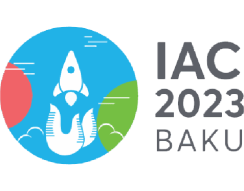
MEEVA Project
Medical Equipment for Extra-Vehicular Activities
Project Overview
Human Space exploration presents many technical challenges when it comes to guaranteeing the safety of astronauts, both on a physiological and psychological level; therefore, it is crucial to train future astronauts and test the technologies that will enable them to venture beyond our planet beforehand.
Analog missions aim to simulate the environment of an extraterrestrial exploration mission on Earth, confining groups of Analog Astronauts (AA) in moon-like environments with a wide set of tasks and experiments to perform, including ExtraVehicular Activities (EVA).
EVAs present many risks for AA, such as extreme temperatures and high psycho-physical stress levels. Developing advanced life support equipment in the context of analog missions is essential to address these challenges, allowing for a safer and more efficient task completion during the mission.
An objective assessment of the astronaut’s physiological parameters and stress level can give the Mission Control Center (MCC) a more accurate understanding of the situation, increasing the probability of a successful outcome and decreasing the risk of unexpected issues regarding the astronaut’s health.
But how can stress be measured? And how to make the EVA a more comfortable experience? Project MEEVA, “Medical Equipment for ExtraVehicular Activities”, addresses both issues through the development and implementation of an undervest for AA.
The developed system will be tested during the “Asclepios IV” analog mission.
MEEVA Undervest

MEEVA is a system designed to measure the astronaut’s vital parameters and inform the MCC regarding the health status of the astronaut, thanks to a physiological stress estimator.
The MEEVA system consists of an undervest with integrated sensors and a temperature control system (TCS). The strategically located sensors provide a real-time measurement of the astronaut’s physiological stress indicators, such as heart rate, skin and core temperature. The readings are then processed by the on board microcontrollers, outputting an estimation of the current stress level of the astronaut which is then compared with a final questionnaire at the end of each mission.
The team is split into four groups, which reflect the subsystems of the undervest: Systems Engineering, Space Medicine, Thermal Control, and Electronics.
 Space Medicine Subsystem
Space Medicine Subsystem
In this context of the analogue missions, the MEEVA Space Medicine team is working on defining and elaborating a method for estimating analogue astronauts’ stress levels.
The selected health parameters that will be analyzed are:
- Heart rate
- Skin temperature
- Core temperature
- CO2 concentration
Another important aspect that should be considered when evaluating the stress level, is the psychological factor. This can be achieved via a questionnaire. Therefore, the questionnaire will be filled in directly by each analogue astronaut at the end of the EVA, which will be used to gain insights into the overall experience and to categorize the experiment by physiological workload, environmental adaptation, communication and team dynamics, and cognitive and performance aspects
 Electronic Subsystem
Electronic Subsystem
The electronic subsystem provides the electronic infrastructure.
Each MEEVA subsystem is designed to acquire a set of quantities (i.e. temperatures) and process them to achieve a particular task (i.e. temperature control). Although each subsystem is responsible for its own embedded code, the ES provides the computational capabilities and interfaces needed to acquire, process and emit data.
The inter-system communication is guaranteed by a CAN bus that connects each microcontroller.
 Temperature Control Subsystem
Temperature Control Subsystem
The temperature control subsystem acquires the body temperature setpoint computed by the space medicine subsystem and activates the cooling system accordingly.
Since the analog astronaut suit is a good insulator and the major problem encountered is overheating, the TCS is designed to provide only cooling features.
A liquid coolant circulates in the undervest and transports the heat produced by the analog astronaut to a phase change material stored on board.
 System Engineering
System Engineering
The interaction between the MEEVA subsystems is orchestrated by the System Engineers.
The mission objectives and operational constraints are declined in several requirements allocated to each subsystem. During the development, the subsystem design can change and SE ensures that each team has an updated list of requirements and coordinates the efforts to solve the technical conflicts.
Finally, the SE watches each subsystem to guarantee that they have the adequate redundancies to achieve the mission goals, even in case of failure.
Achievements

<span data-metadata=""><span data-buffer="">International Astronautical Congress Baku 2023
During the IAC 2023 in Baku, the project was presented through the paper “MEEVA: A smart system to estimate and mitigate stress effects during Analogue Astronauts’ EVAs”, which has been a great opportunity to collect feedback from the scientific community and to expand our network.
The paper can be consulted here: MEEVA: A smart system to estimate and mitigate stress effects during Analogue Astronauts’ EVAs | Request PDF (researchgate.net)
Team
Project Manager
Space Medicine
Giuseppe De Luca









